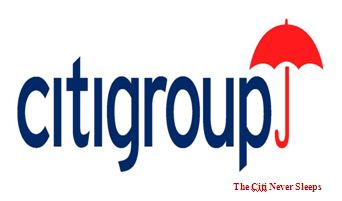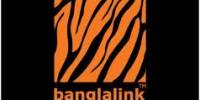Business Overview of Citigroup
Citigroup
Citigroup Inc. (NYSE: C) is a major American financial services company based in New York City. According to Forbes Global 2000, it is the world’s largest company and the most profitable financial services firm. Its formation was announced on April 7, 1998 through a merger of Citicorp and Travelers Group. It was the first US company to combine banking with insurance underwriting since the Great Depression. The company has just under 300 000 employees and over 200 million customer accounts in more than 100 countries, with total assets of nearly 1.6 trillion USD. It is a primary dealer in U.S. Treasury securities and its stock is a component of the Dow Jones Industrial Average.
On September 5, 2006, Citigroup announced that Singapore’s Minister Mentor Lee Kuan Yew had agreed to be its Special Advisor. He will provide counsel to Citigroup’s senior management and its Board on international developments that impact on economies and businesses globally.
World Market Share
Although it is one of the largest companies in the world, Citigroup only had a 5% global market share of its industry in 2003. The financial services sector, though the largest industry in terms of earnings, is also the most fragmented in terms of companies. Citigroup had a 10% share of the “capital markets & banking” (corporate and investment bank division) in 2003. The Thomson Financial League Tables tracks the underwriting and M&A segment of that in more detail.
2003 global (except Retail Banking) market share:
- Capital Markets and Banking: 10%
- Consumer Finance: 6%
- Private Client Services: 5%
- US Retail Banking: 4%
- Transaction Services: 2%
- Private Bank: 2%
H is to r y of Citigroup
The history of the corporation now known as Citigroup is primarily the history of two separate organizations, Citicorp and Travelers Insurance. Citicorp was a multinational banking corporation operating in nearly 100 countries. Travelers was an amalgamation of many different companies beginning with Commercial Credit in Baltimore and gradually expanding with purchases of Primerica (consumer finance), Smith Barney (brokerage) and Traveler (Insurance).
At the time of the merger between Citicorp and Travelers, Sandy Weill was the chairman of Travelers and John Reed was the Chairman of Citicorp. Under the auspices of creating a one-shop stop for insurance and banking products, the merger became a takeover by Travelers shortly thereafter. The two CEOs could not have been more different in management style and their paths to the top.
Initially setup as co-CEOs, within two years of the merger John Reed was no longer with Citigroup. Of note, roughly at the time of the merger, Sandy Weill’s compensation was on the top 10 list for CEOs, while John Reed’s compensation was considered one of the top 10 for being the most accurate reflection of performance for pay.
D iv is io n s
Citigroup is divided into three major business groups: Global Consumer, Global Wealth Management, and Corporate and Investment Banking. It also includes one stand-alone business, Citigroup Alternative Investments.
The Global Consumer Group comprises three sub-divisions: Cards (credit cards), Consumer Finance, and Retail Banking. The credit card business on average delivers about 40% of the profits of this group. Citigroup is the largest provider of credit cards in the world, a position long held by Citicorp, and increased by many acquisitions of card portfolios. It provides credit cards in many countries even where it doesn’t have branches, and advertises directly on TV and by direct mail. The Consumer Finance Division (called Citifinancial) accounts for about 20% of the consumer group’s profits. This division engages in the controversial practice of high interest rate lending to people with bad credit histories, called “loan sharking” or “predatory lending” by critics. Although this was the core of the corporation from which other divisions were acquired, most of the size, stores, and global reach of this division came from the takeover of Associates First Capital. Citifinancial is now the largest consumer finance company in the world.
The final division is the retail bank. This division consists of the normal retail branch system that banks are most known for. This goes by the brand name “Citibank”. Citibank is the third largest retail bank in the United States, and it has branches in countries throughout the world. The biggest part of retail banking however is Banamex, the largest bank in Mexico, which Citigroup owns. Overall the Global Consumer group contributes more than half of all the profits for Citigroup. If it were a separate company, it would still be in the top ten most profitable companies in the world.
The Corporate and Investment Banking division consists of three subgroups Global Markets, Global Banking, and Global Transaction Services. This division essentially handles large corporate cash management, trade, lending, and investment banking services. Citigroup’s investment bank is one of the largest, frequently topping many league tables. It does not engage in as much proprietary trading (stock and bond speculation) as do other investment banks.
The Global Wealth Management division is comprised of The Citigroup Private Bank, Smith Barney, and Citigroup Investment Research. The Citigroup Private Bank provides banking and investment services to high net worth individuals, private institutions, and law firms. Smith Barney is the second largest stock broker in the world.
The Citigroup Alternative Investments group is an alternative investments platform that manages assets across five classes: private equity, hedge funds, structured products, managed futures, and real estate. Essentially it offers various funds or separate accounts that utilize alternative investment strategies, as opposed to the mainstream mutual funds that it recently sold to Legg Mason.
These kinds of funds are not as commoditized as normal mutual funds, and products such as “structured products” are hybrid debt/equity/derivative issuances underwritten by its Investment Banking division. It offers over eighty investment products to institutions and qualified individual investors.
Citibank N.A. Bangladesh
Citibank N.A. is a foreign private bank in Bangladesh. The Bangladesh branch commenced its banking operations on 24 June 1995 after obtaining license from Bangladesh Bank in January 1995. Before starting full-fledged banking activity through the branch at Dhaka established a foreign representative office here in 1987. The present branch of the bank is the upgraded and transformed shape of the representative office. Citigroup Inc., a merger of Citicorp Inc. and Travelers Group Inc. formed on 8 October 1998, is a bank holding company under the laws of United States of America. It is the sole shareholder of Citibank N A and its head office in New York governs the businesses of its Bangladesh branch. The bank commenced business in Bangladesh with a paid up capital of Tk 204 million and total assets of Tk 809 million.
The principal activities of the Dhaka branch of Citibank N.A. are to provide all kinds of commercial and merchant banking services to its customers. Deposit mobilization of the bank during the initial six months of its operations in Bangladesh amounted to Tk 541.89 million, which rose to Tk 1,577 million in 2000. The deposits were in traditional savings, current, fixed and other accounts.
The interest rates offered by the bank on various deposit accounts since August 2000 have fluctuated between 5.50% and 8.50%. The amount of time deposits in the bank stood at Tk 1,435.7 million on 31 December 2000. The bank has its deposits with other banks within and outside Bangladesh.
Total volume of lending of the bank was Tk 624.2 million in 2000. The bank had no classified non-performing loans up to 31 December 2000. In addition to traditional lending activities, the bank is extensively involved in long-term financing in Bangladesh through equity participation and in other forms of term investments. It has equity participation in Shinepukur Ceramic Ltd and the country’s first private television channel Ekushey (ETV). The bank issued and sold floating rate certificates of $87.00 million in New York to finance the establishment of the 110-MWatt barge-mounted powerplant at Haripur in Naryanganj under the guarantee of a US investment company. In addition, the bank also provided huge long-term funding support to AES-Haripur Ltd, a 350- MWatt combined cycle power plant, and to Khulna Power Company Ltd (KPCL).
Citibank N A provided support to large, medium and small scale industries in the form of working capital financing, medium and long-term financing, export servicing and import financing, and loans and advances to trade and commerce. Lending rates on these financing schemes varied between 8% and 16.50% during its operations in Bangladesh.
Citibank N A borrowed Tk 60 million in 1995, Tk 352.2 million in 1999, and Tk 442.8 million in 2000 from other banks and financial institutions. The bank’s lending in the inter-bank call money market was Tk 110 million on 31 December 2000. Total investment of the bank stood at Tk 630 million on the date as against Tk 290 million in 1998. The investment was in government Treasury Bills only. The foreign exchange business handled by the bank during 1999 amounted to Tk 3,243 million, comprising export servicing (Tk 19 million), import financing (Tk 2,170 million) and remittance services (Tk 1,054 million).
At the time of commencement in 1995, Citibank N A had total assets of Tk 809 million, which in 2000, increased to Tk 4,647.4 million excluding off-balancesheet assets worth Tk 1,747.8 million. Gross earning assets of the bank were valued at Tk 2,160.1 million in 2000. The bank maintained its liquid assets in the form of short-term investments in government treasury bills and deposits with other banks and financial institutions in the host and home countries. In 2000, these assets amounted to Tk 1,617.2 million and were considered sufficient to resolve its current debt and other liquidity obligations. Citibank N.A. performed well in terms of its net profits almost each year except in 1995, when it incurred a loss of Tk 24.88 million. Its income was derived mainly from interests, discounts, commissions, and brokerages.
Product and Services
■ US Dollar Demand Deposit Account with Citibank NY
– Euro accounts with Citibank London/ Frankfurt
■ US Dollar Electronic Funds Transfers
■ Sweep and Investment Services or Products
■ Daily Account Statements
■ Customer Inquiry handling
■ Letters of credit advising / confirming
■ Reimbursement Authority Processing
■ Electronic banking (CITIDIRECT)
Sales & Trading
As a part of the world’s premier financial solutions provider Citigroup, Citibank N.A.’s Sales and Trading desk also strives to offer the world’s best treasury products to its customers at the most professional and competitive manner. As an acknowledgement of the banks’ continued dedication to serve the customers the very best, the bank have been ranked number one treasury bank by many international journals time and again.
Keeping in tune with the international reputation, Citibank N.A., Bangladesh has also gained the confidence and respect of the customers it serves. The bank offers niche products to cater to the specific and sensitive requirements of the valued customers. They strive to lead changes with the maturity of local markets, bringing in the world-renowned, sophisticated products and services at the earliest instance of any scope being available to do so. Presently the bank offers their customers the following treasury products:
Product and Services
- Foreign Exchange
- Ready and Spot
- Forward
- Currency Swaps
- Money Market & Fixed Income
- Overnight Deposits
- Term Deposits
- Discounted Securities
- Repo/Reverse Repo
- Purchase/ Sale of T Bills & Bonds in secondary Market
Drawbacks of Citibank, N.A. Bangladesh in creating brand awareness
Citibank is the consumer and corporate banking arm of financial services giant Citigroup, the largest company of its kind in the world. Though being the leading financial institution in the world, Citibank, N.A. Bangladesh does not provide consumer banking in Bangladesh, but still they earn record profits from their limited operations in Bangladesh.
People of Bangladesh are not much aware about the operations of Citibank, N.A. Bangladesh as they are not being served directly by the bank itself. But the bank has always shown strong commitments towards the community by engaging themselves in many community events. These efforts have led to the development of their brand name in the Bangladeshi economy. There are some specific difficulties for the bank which has prevented them to promote their brand more to the people of Bangladesh. The problems are:
- No consumer banking
This can be regarded as the major drawback of the bank. They only have corporate banking in Bangladesh which prevents them to get more close to the mass people. Their major functions include dealing with the corporate clients, international trade, etc. which keeps them away from the mass public. Dealing only with the corporate clients and foreign trade is not helping them to establish a solid rapport with the general people and thus the bank is failing to build a strong brand image in the market.
- Lack of promotional efforts
Citibank, N.A. Bangladesh has shown strong commitment to the Bangladesh community by engaging in different types of community issues. They have worked hand in hand with Acid Survivors Foundation, Shakti Foundation for Disadvantaged Women, Bishwo Sahitto Kendro, Liberation War Museum, etc. and very recently promoted microentrepreneurs who have been successful in life by taking microcredit. These promotional activities successfully gained attention of many people, but failed to create a mass impact as many of these efforts did not have any emotional impact. They should engage themselves into such activities that would create more impact on people.
- Intense competition
Standard Chartered Bank has taken the largest market share in the banking industry in Bangladesh with their superior services and fabulous products. It will be difficult for any other multinational bank to create a better image than them. Citibank, N.A. Bangladesh will have to face intense competition from Standard Chartered Bank as well as from the other multinational banks in Bangladesh. If they even plan to start consumer banking, it will be tough for them to gain market share as it is already controlled by some major banks in Bangladesh.
- Local organizations
The City Bank Limited is a private local bank in Bangladesh whose name somehow resembles with the Citibank, N.A. Bangladesh. This creates confusion in the minds of people whenever they read any news about Citibank in any media. Moreover, to create more puzzlement, there is a local company in Bangladesh naming City Group of Industries whose operations are far more different from that of Citigroup and Citibank.
These local organizations create problems for Citibank, N.A. Bangladesh as people misinterpret their names and may not comprehend the real brand.
- Lack of detailed layout of Corporate Affairs Department
The Corporate Affairs Department in Citibank, N.A. Bangladesh is not properly structured. This department is responsible for all sorts of branding activities for the bank as a whole. Currently, only one person is taking care of this department without the help of any permanent employee. It creates more pressure on the manager of this department and sometimes might not perform at the best level due to immense work pressure.
- Lack of inter-branch coordination
Many a times it can be seen that the Motijheel branch and the Gulshan branch is not harmonizing properly. Bills raised from Gulshan branch are sent to Motijheel branch for issuance of cheques. Instead of issuing them instantly, there is an unnecessary delay in the procedure. This does not ensure proper services to the clients and vendors as they do not getpaid promptly and hence degrades the brand image of the bank.
Conclusion
Branding in Citibank, N.A. Bangladesh is mainly carried out by the Corporate Affairs Department of the bank. The major responsibilities of this department are to maintain liaison with different organizations, especially with those who work in close proximity with Citibank, Bangladesh. This department is very crucial for the bank as it establishes relationship with other organizations in the corporate world.
It also maintains relation with internal and external customer. Sometime there might be crisis situation that could be unheard of, that time this department takes active role to protect reputation and brand value of the Citigroup. Moreover, this department arranges various seminars and workshops and also takes the initiative in undertaking various training programs to enhance the knowledge of the employees regarding Citibank, its customers and suppliers.
This report tries to find out the brand awareness of the Bangladeshi people about the multinational banks that are operating in Bangladesh, in this regard, a survey is being carried out. It is very clear from the survey that the Standard Chartered Bank is dominating the market for multinational banks in Bangladesh. This is mainly because of the vast and diversified services they offer to their clients.
Moreover they are operating in the Bangladeshi market for a long period of time with huge success. They have been the pioneer in introducing many new products than any other banks in Bangladesh. Though being the world’s leading financial institution, Citibank, N.A. Bangladesh is also lacking behind mainly because of the lack of consumer banking in Bangladesh. People are more aware about the slogans and logo of Standard Chartered Bank than any other bank.
Most of them believe that reputation, financial stability, reasonable charges, service attitude of employees, technology adoption, global service network and new product innovation are the main reasons behind selecting any multinational bank in Bangladesh. They also consider that the multinational banks they are using are sufficiently providing these facilities in order to provide the best possible services.
















